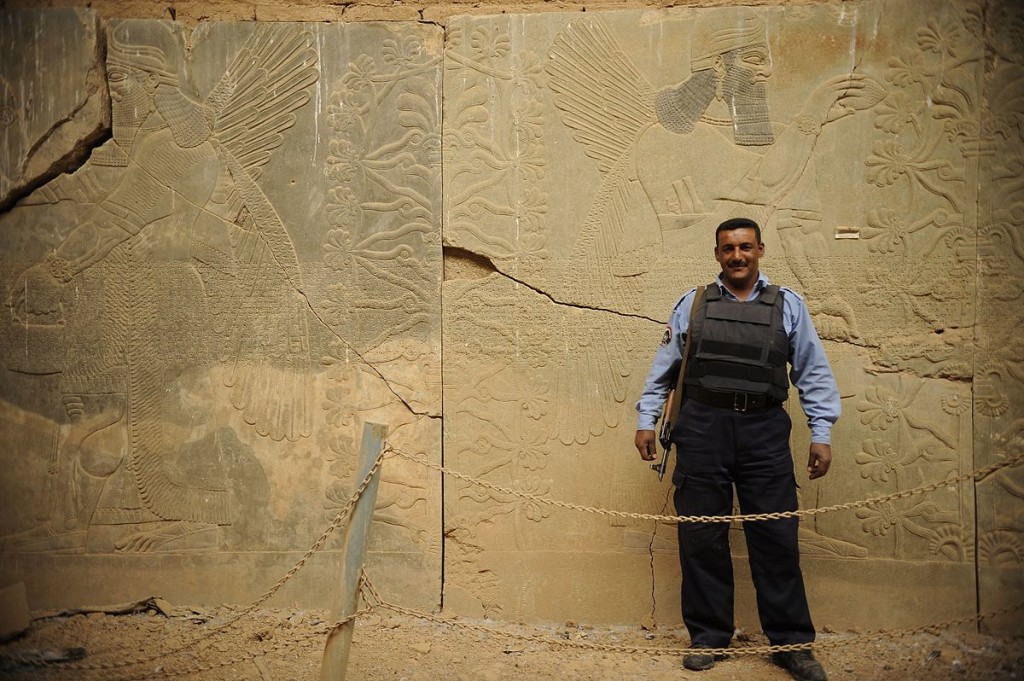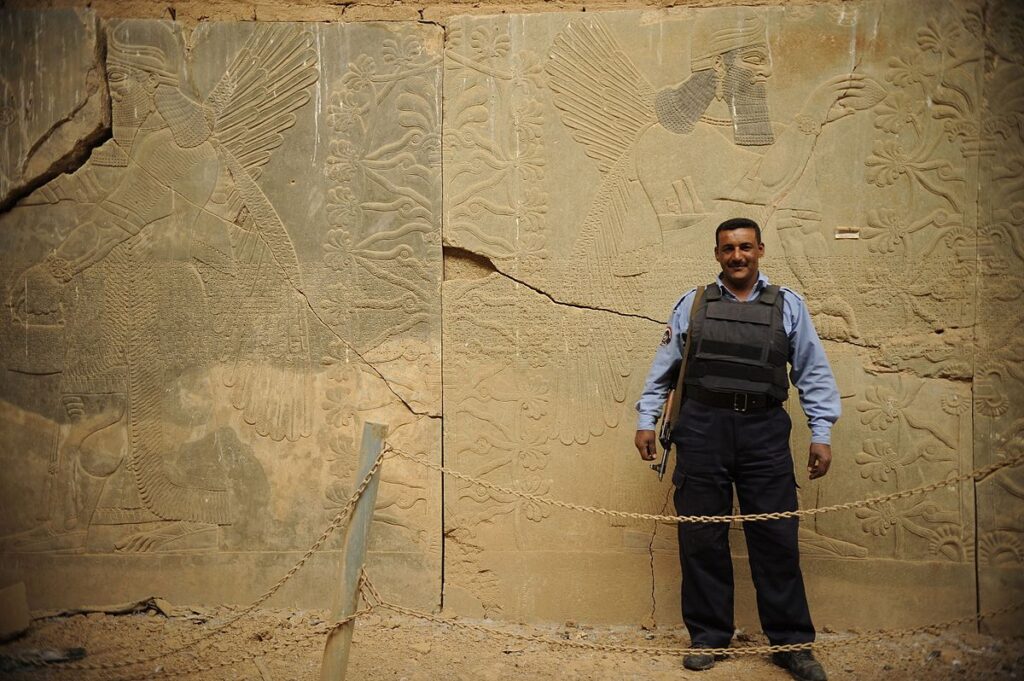
“Its wall was twenty-five feet in breadth and a hundred in height, and the whole circuit of the wall was two parasangs. It was built of clay bricks, and rested upon a stone foundation twenty feet high” —Xenophon, Anabasis.
Although it once stood prominently as the capital of the Assyrian Empire and the site of the Biblical precinct of Caleh, the ancient city of Nimrud is now gone—completely decimated by the hands of Islamic State militants. Beginning in March 2015, the extremist Islamic faction established itself as as the destroyer of Nimrud and thus set out on a mission to reduce it to rubble solely due to its historical and cultural importance. Videos released in April 2015 confirmed the alleged destruction, as ISIS militants used weapons and explosives to demolish the ruins. The footage released reveals the utter destruction of nearly the entire site, including the loss of important edifices, cuneiform writings and most alarmingly, of the priceless anthropocephalic winged bull, which once towered over the gates of the city.
Nimrud is not the only site to have fallen victim to this ‘cultural genocide.’ Mosul, Palmyra, Hatra, Al-Raqqha and hundreds of other structures associated with polytheism, idolatry and non-Islamic practices have been reduced to rubble—their history lost forever.
This hate-driven attack on cultural heritage sites is clearly a manifestation of cultural destruction, and more specifically iconoclasm. In its most literal definition, iconoclasm means “image-destruction,” but throughout history it has proven to resonate differently. Hatshepsut’s image was not removed from temples across Egypt to disrespect her leadership but rather because her opponents wanted to erase the concept of a powerful female pharaoh. The Taliban did not demolish the Buddhas of Bamiyan because they felt threatened by the Buddhist population of Afghanistan but rather to pursue their ideological battle against the globalizing concept of “cultural heritage.” And ISIS has not been systematically destroying and dismantling cultural heritage sites to sell items on the black market or threaten historical findings but rather to attack the world in a less obvious way—a way that targets identity, tradition and humanity.
With historical perspective, it becomes clear that ISIS’ iconoclastic efforts transcend the assumption of “image-destruction,” as is implied by the word’s definition. They aim to erase non-Islamic history, eliminate ethnic ties to past civilizations in the region and ultimately degrade the morale of the people fighting against them. Their strategy has proven quite effective considering the ties that civilians have to their homeland and history.
Only on November 16, 2016—more than a year after the first attack—was the archaeological area of Nimrud safe enough for top Iraqi military officials to survey the damage. Although no archaeologists or officials qualified in the field of antiquities have visited in the aftermath of the Islamic State’s destruction, the Iraqi military estimates that nearly 90 percent of the archaeological area has been lost. Although the extent of this is uncertain, the–albeit limited–media coverage that this destruction has received reveals that the losses truly have been devastating.
Sites in the Middle East like Nimrud have not been the only ones to fall victim to destruction on the basis of culture. In Timbuktu, nine mausoleums, a mosque and thousands of priceless manuscripts were destroyed or severely damaged. These crimes have predominantly been attributed to Ahmad al-Mahdi, a former member of the Malian Department of Education and affiliate of AQIM, an al-Qaeda driven group, who was tried by the International Criminal Court (ICC) and pleaded guilty for destroying cultural heritage. The destruction aimed to erase traces of the previously prospering civilization of Timbuktu, which produced writings on philosophy, human rights and women’s rights.
On an international level, this ‘cultural genocide’ has been overlooked in the midst of mass migration, terrorist attacks, and the war ravaging Syria and Iraq. The humanitarian and political implications developed by ISIS’ regime are omnipresent in the media and have taken precedence in actions conducted by both individual countries and organizations such as the United Nations.
The leader in efforts to protect global culture and history has been Irina Bokova, the Director-General of UNESCO, who has claimed that the “deliberate destruction of cultural heritage constitutes a war crime.” Bokova’s quasi-controversial efforts have recently come under attack for not taking into account the loss of human lives and degradation of human rights in the region; however, according to Bokova, this dichotomy does not need to exist. What Bokova has claimed is that the two exist vis-à-vis and not against one another, because cultural destruction is human destruction manifested in a different form.
Whether the Islamic States’ actions will be treated as ‘war crimes,’ ‘cultural genocide’ or ‘cultural cleansing’ remains to be seen. Perhaps it is time for the international community to reevaluate their actions and not only take into account traditional forms of violence but also focus on ISIS’ destruction that has resulted in the loss of a culture, identity and history—perhaps the biggest threat to our humanity.
The views expressed by the author do not necessarily reflect those of the Glimpse from the Globe staff, editors or governors.








